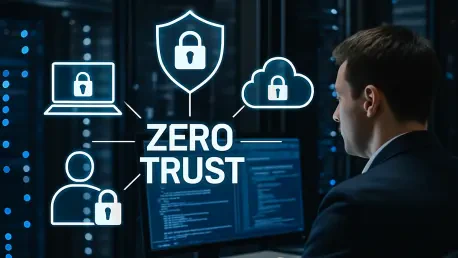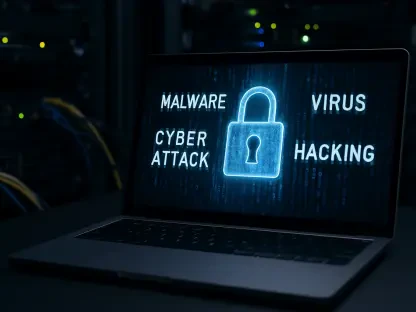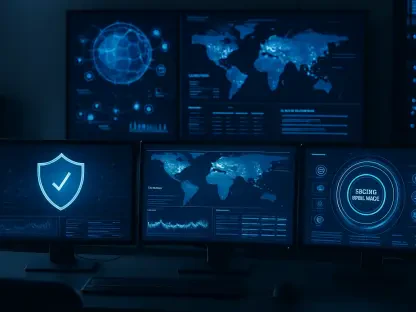In today’s rapidly evolving digital world, cybersecurity remains a paramount concern for organizations of all sizes. With cyber threats becoming increasingly sophisticated, traditional security measures based on perimeter-centric models face significant challenges in providing effective protection. In response to this growing issue, the Zero Trust model has gained traction as a transformative approach to cybersecurity. By advocating that no entity should be trusted by default, Zero Trust emphasizes continuous verification of every access request and rigorous access control measures. As organizations grapple with the complexities of modern network ecosystems, the pressing question arises: is Zero Trust the future of cybersecurity systems?
Zero Trust Principles and the Changing Cybersecurity Landscape
Zero Trust represents a radical shift from conventional cybersecurity paradigms by fundamentally altering how networks are secured. Traditional models operate on the assumption that once inside the network perimeter, users and devices can be trusted. However, this approach poses significant vulnerabilities, especially in environments where remote work, cloud-based services, and diverse devices are prevalent. Cybercriminals have adapted to exploit these gaps, leading to a growing recognition that perimeter defenses alone are inadequate. Zero Trust addresses these challenges head-on by implementing a ‘never trust, always verify’ mentality, which assumes no implicit trust is warranted.
Central to the Zero Trust model are several key principles designed to provide comprehensive security across networks. Core components include granular access control based on least privilege, continuous monitoring and validation of users and devices, and microsegmentation to limit lateral movement within networks. By enforcing these principles, Zero Trust aims to reduce the attack surface, thereby containing potential breaches and minimizing damage. This model not only responds to the current threat landscape but also anticipates future challenges, offering a proactive defense strategy that adapts to evolving threats and complex network environments.
The shift towards Zero Trust is further fueled by regulatory pressures and the increasing need for data privacy and protection. Compliance with regulations such as GDPR and CCPA necessitates robust security measures, and Zero Trust provides a framework that aligns with these requirements. Additionally, the proliferation of cloud computing, IoT devices, and mobile workforces necessitates a flexible and scalable security model capable of addressing the diverse needs of modern organizations. By abandoning the outdated notion of secure perimeters, Zero Trust represents a modern approach that prioritizes data-centric security, protecting both critical assets and user privacy.
Implementing Zero Trust: Opportunities and Challenges
The practical implementation of Zero Trust principles poses both opportunities and challenges for organizations embarking on this cybersecurity journey. On one hand, the adaptable nature of Zero Trust allows for its application across various network architectures, including cloud infrastructure, on-premises systems, and hybrid environments. By leveraging commercially available technologies, organizations can progressively adopt Zero Trust measures in line with their specific needs and resources. This flexibility enables organizations to phase in Zero Trust at a pace that suits their operational requirements without overwhelming their existing security frameworks.
Nonetheless, transitioning to a Zero Trust model is not without its obstacles. A primary challenge lies in the complexity of overhauling traditional security architectures and integrating new access control mechanisms. Organizations must assess their current security posture and develop a comprehensive strategy to implement Zero Trust principles effectively. This entails understanding user access patterns, identifying critical assets, and establishing robust identity management systems. Moreover, potential disruptions to daily business operations must be managed carefully to ensure a smooth transition while maintaining uninterrupted services.
Another significant consideration is the cultural shift that Zero Trust necessitates within an organization. Implementing this model requires a change in mindset, where security practices must permeate every level of the organization, from top management to frontline workers. Employee training and awareness programs are essential to foster a cybersecurity-first culture, ensuring that all stakeholders recognize the importance of continuous verification and adhere to access protocols.
Real-World Applications of Zero Trust Architecture
Numerous case studies and examples illustrate the real-world application of Zero Trust Architecture (ZTA) across diverse industry sectors. Organizations in healthcare, finance, government, and technology have successfully adopted Zero Trust principles to enhance their security posture and mitigate potential threats. The practical examples provided by the National Institute of Standards and Technology (NIST) serve as valuable references for organizations seeking to emulate these successful implementations. NIST’s guidance details a range of deployment scenarios, leveraging technologies such as Software-Defined Perimeters (SDP), microsegmentation, and Secure Access Service Edge (SASE) to achieve robust security outcomes.
The healthcare sector, for instance, has benefited from Zero Trust by securing sensitive patient data and protecting it from unauthorized access. By implementing strict access controls and multi-factor authentication, healthcare organizations can ensure that only authorized personnel can view and modify patient records. Additionally, microsegmentation techniques prevent the spread of malware within the network, safeguarding critical systems against cyberattacks.
Similarly, the financial industry has recognized the value of Zero Trust in securing financial transactions and safeguarding customer information. By employing continuous monitoring and behavioral analytics, financial institutions can detect anomalies and respond swiftly to potential threats. The Zero Trust approach enhances fraud detection capabilities, ensuring the integrity and confidentiality of financial data.
Expert Insights and Emerging Trends in Zero Trust
The growing acceptance of Zero Trust as a viable cybersecurity model has led to an evolving dialogue among industry experts, thought leaders, and policymakers. Interviews and insights from cybersecurity professionals highlight the increasing recognition that Zero Trust represents a strategic imperative in safeguarding organizational assets. Experts emphasize the importance of a well-defined Zero Trust strategy tailored to the unique needs of each organization, incorporating best practices and adhering to established cybersecurity frameworks.
Emerging trends in the cybersecurity landscape further underscore the relevance of Zero Trust. The rise of artificial intelligence and machine learning technologies offers new possibilities for enhancing Zero Trust implementations. By leveraging AI-driven analytics, organizations can achieve real-time threat detection and response, elevating their security capabilities to unprecedented levels. These advancements demonstrate that Zero Trust is not a static model but a dynamic framework evolving in tandem with technological advancements.
While Zero Trust holds significant promise, experts caution against complacency and underscore the need for continuous improvement. Regular security assessments, threat intelligence sharing, and collaboration with industry peers are essential aspects of a resilient Zero Trust model. As cyber threats evolve, organizations must remain vigilant, continuously refining their Zero Trust strategies to address emerging risks.
Future Prospects and Conclusion
In the fast-paced, ever-changing digital landscape, cybersecurity has emerged as a critical issue for businesses and organizations, regardless of their size or industry. As cyber threats become more sophisticated, traditional security frameworks that focus primarily on perimeter-based defenses are proving inadequate. This failing has prompted the rise of the Zero Trust model, which is being recognized as a groundbreaking solution to cybersecurity challenges. The core principle of the Zero Trust approach is that no entity—whether within or outside the network—should be trusted automatically. Instead, Zero Trust demands constant authentication for every access request, along with strict access control protocols. This model is designed to address the complexities and vulnerabilities inherent in contemporary network environments. As businesses navigate these intricate ecosystems, the looming question emerges: is Zero Trust poised to become the cornerstone of future cybersecurity strategies? Its proactive stance on verification and its emphasis on rigorous security measures suggest that organizations might increasingly adopt Zero Trust as they strive to protect their digital assets in an era where cyber threats are relentless and increasingly cunning.









